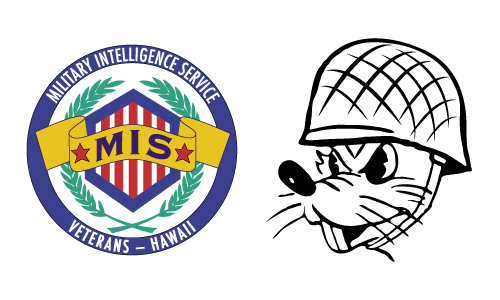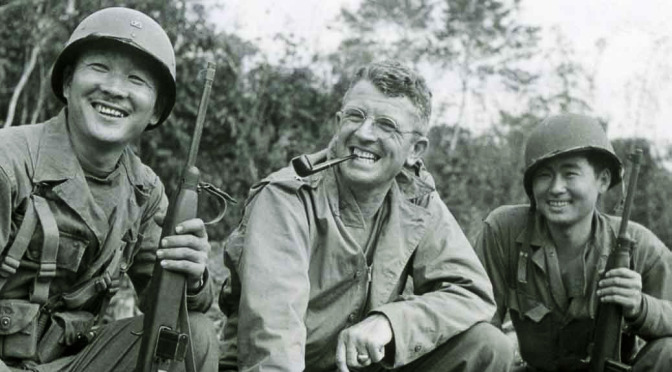Above: MIS linguists Sergeants Herbert Miyasaki of Paʻauilo, Hawai‘i, left, and Akiji Yoshimura of Colusa, California, right, take a break from jungle fighting in Burma with Brigadier General Frank Merrill, commander of the 5307th Composite Group, Provisional, better known as Merrill’s Marauders. U.S. Army photo.
Nisei in the War Against Japan
Thousands of Americans of Japanese ancestry waged war against their parents’ homeland in World War II as members of the U.S. Army’s Military Intelligence Service, using their knowledge of the enemy’s language and culture to give America a priceless edge that shortened the war and saved countless lives.
From Guadalcanal and the Aleutians to Okinawa and India, AJA linguists served in every major battle and campaign of the war against Japan, gleaning vital information from prisoners and documents, flushing caves, fighting as infantrymen. After the war, they were essential in rebuilding Japan as a modern democracy and staunch U.S. ally. The MIS soldiers’ feats were classified for years. And they usually served in small groups on temporary duty, so their work too often went unrecorded. Yet they put to rest any doubts about the loyalty of Japanese Americans.
Americans of Japanese ancestry who fought in World War II against Japan are usually labelled “MIS.” But the Military Intelligence Service was not a unit. During the war, MIS provided thousands of intelligence and language specialists for the Army, other services and Allies in Europe as well as the Pacific. Most, but not all of the Japanese language specialists trained at the MIS Language School in Minnesota. Most, but not all of them were Japanese Americans. And most, but not all of them were trained or deployed by the MIS. So “MIS” is an imprecise label. But the veterans ultimately settled on that over earlier labels such as “interpreters” and “MISers.”

